Chapter 3. Microservice Communication Styles
Getting communication between microservices right is problematic for many, in great part due to the fact that I feel that people gravitate towards a chosen technological approach without first considering the different types of communication you might want. In this chapter, I’ll try and tease apart the different styles of communication, to help you understand the pros and cons of each, and also help you understand which approach will best fit your problem space.
We’ll be looking at synchronous blocking and asynchronous non-blocking communication mechanisms, as well as comparing request-response collaboration with event-driven collaboration.
By the end of this chapter you should be much better prepared to understand the different options available to you, and will have a foundational knowledge that will help when we start looking at more detailed implementation concerns in the following chapters.
From In-Process To Inter-Process
OK, let’s get the easy stuff out of the way first - or at least what I hope is the easy stuff. Namely, calls between different processes across a network (inter-process) are very different to calls within a single process (in-process). At one level, we can ignore this distinction. It’s easy, for example, to think of one object making a method call on another object, then just map this interaction to two microservices communicating via a network. Putting aside the fact that microservices aren’t just objects, this thinking can get us into a lot of trouble.
Let’s look at some of these differences now, and how they might change how you think about the interactions between your microservices.
Performance
The performance of an in-process call and an inter-process call is fundamentally different. When I make an in-process call, the underlying compiler and runtime can carry out a whole host of optimizations to reduce the impact of the call, including inlining the invocation so it’s as though there was never a call in the first place. No such optimizations are possible with inter-process calls. Packets have to be sent. Expect the overhead of an inter-process call to be significant compared to the overhead of an in-process call. The former is very measurable - just round-tripping a single packet in a data centre is measured in milliseconds - whereas the overhead of making a method call is something you don’t need to worry about.
This can often lead you to want to rethink APIs. An API that makes sense in-process may not make sense in inter-process situations. I can make 1000 calls across an API boundary in-process without concern. Do I want to make 1000 network calls between two microservices? Perhaps not.
When I pass a parameter into a method, the data structure I pass in typically doesn’t move - what’s more likely is that I pass around a pointer to a memory location. Passing in an object or data structure to another method doesn’t necessitate more memory to be allocated in order to copy the data.
When making calls between microservices over a network on the other hand, the data actually has to be serialized into some form that can be transmitted over a network. The data then needs to be sent, and deserialized at the other end. We therefore may need to be more mindful about the size of payloads being sent between processes. When was the last time you were aware of how big a data structure was that you were passing around inside a process? The reality is that you likely didn’t need to know - now, you do. This might lead you to reduce the amount of data being sent or received (perhaps not a bad thing if we think about information hiding), pick more efficient serialization mechanisms, or even offload data to a file system and pass around pointers to that data instead.
These differences may not cause you issues straight away, but you certainly need to be aware of them. I’ve seen a lot of attempts to hide from the developer the fact that a network call is even taking place. Our desire to create abstractions to hide detail is a big part of what allows us to do more things more efficiently, but sometimes we create abstractions that hide too much. A developer needs to be aware if they are doing something that will result in a network call, otherwise do not be surprised if you end up with some nasty performance bottlenecks further down the line.
Changing Interfaces
When we consider changes to an interface inside a process, the act of rolling out the change is straightforward. Both the code implementing the interface, and the code calling the interface, are all packaged together in the same process. In fact if I change a method signature using an IDE with refactoring capability, often the IDE itself will automatically refactor calls to this changing method. Rolling out such a change can be done in an atomic fashion - both sides of the interface are packaged together in a single process.
With communication between microservices, however, the microservice exposing an interface, and the consuming microservices using that interface, are separately deployable microservices. When making a backwards incompatible change to a microservice interface, we either need to do a lock-step deployment with consumers, making sure they are updated to use the new interface, or else find some way to phase the rollout of the new microservice contract. We’ll explore this concept in more detail later in this chapter.
Error handling
Within a process, if I call a method, the nature of the errors tends to be pretty straightforward. Simplistically, the errors are either expected and easy to handle, or else they are catastrophic to the point where we just propagate the error up the call stack. Errors, on the whole, are deterministic.
With a distributed system, the nature of errors can be different. You are vulnerable to a host of errors that are outside of your control. Networks time out. Downstream microservices might be temporarily unavailable. Networks get disconnected, containers get killed due to consuming too much memory, and in extreme situations, bits of your data centre can catch fire1.
Many of these errors are often transient in nature - they are short-lived problems that might go away, and therefore are things you might want to retry - think of a simple network timeout. Other problems can’t be dealt with easily. As a result, it can become important to have a richer set of semantics for returning errors in a way that can allow for clients to take appropriate action.
HTTP is an example of a protocol that understands the importance of this. Every HTTP response has a code, with the 400 and 500 series codes being reserved for errors. 400 series error codes are request errors - essentially, a downstream service is telling the client that there is something wrong with the original request. As such, it’s probably something you should give up with - is there any point retrying a 404 Not Found for example? The 500 series response codes relate to downstream issues, a subset of which indicate to the client that the issue might be temporary. A 503 Service Unavailable for example indicates that the downstream serer is unable to handle the request, but that this could be a temporary state. In which case, an upstream client might decide to retry this request. On the other hand, if a client received a 501 Not Implemented response, a retry is unlikely to help much.
Whether or not you pick a HTTP-based protocol for communication between microservices, if you have a rich set of semantics around the nature of the error, you’ll make it easier for clients to carry out compensating actions, which in turn should help you build more robust systems.
Technology for Inter-process Communication: So Many Choices
“And in a world where we have too many choices and too little time, the obvious thing to do is just ignore stuff.”
Seth Godin
The range of technology available to us for inter-process communication is vast. As a result, we can often be overburdened with choice. Often, I find people just gravitate to technology which is familiar to them, or perhaps just the latest hot technology they learned about from a conference. The problem with this is that when you buy into a specific technology choice, you are often buying into a set of ideas (and constraints) that come along for the ride. These constraints might not be the right ones for you - and the mindset behind the technology may not actually line up with the problem you are trying to solve.
If you’re trying to build a website, single page app technology like Angular or React is a bad fit. Likewise, trying to use Kafka for request-response really isn’t a good idea, as it was designed for more event-based interactions (topics we’ll get to in just a moment). And yet I see technology used in the wrong place time and time again. People pick the new shiny tech (like microservices!) without considering whether or not it fits their problem.
When it comes to the bewildering array of technology available to us for communication between microservices, I therefore think it is important to talk first about the style of communication you want, and only then look for the right technology to implement these styles. With that in mind, let’s take a look at a model I’ve been using for several years to help distinguish between the different approaches for microservice-to-microservice communication, which in turn can help you filter the technology options you’ll want to look at.
Styles of Microservice Communication
In Figure 3-1 we see an outline for the model I use for thinking about different styles of communication. This model is not meant to be entirely exhaustive (I’m not trying to present a grand unified theory of inter-process communication here), more that it provides a good high-level overview for considering the different styles of communication which are most widely used for microservice architectures.
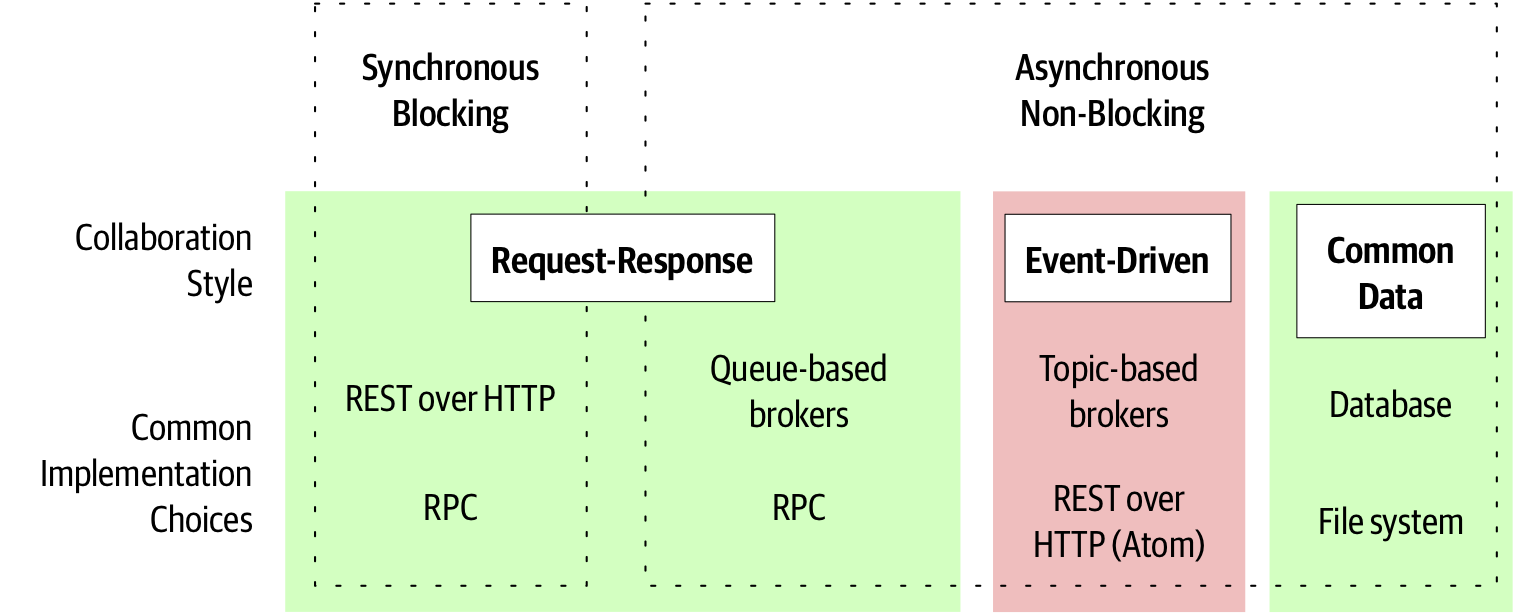
Figure 3-1. Different styles of inter-microservice communication along with example implementing technologies
We’ll look at each element in more detail shortly, but first I’d like to briefly outline the different elements of this model.
- Synchronous Blocking
-
A microservice makes a call to another microservice and blocks operation waiting for the response.
- Asynchronous Non-Blocking
-
The microservice emitting a call is able to carry on processing whether or not the call is received.
- Request-response
-
A Microservice sends a request to another microservice asking for something to be done. It expects to receive a response to the request informing it of the result.
- Event-Driven
-
Microservices emit events, which other microservices consume and react to accordingly. The microservice emitting the event is unaware of which microservices, if any, consume the events it emits.
- Common Data
-
Not often seen as a communication style, microservices collaborate via some shared data source.
When using this model to help teams decide on the right approach, I spend a lot of time understanding the context in which they are operating. Their needs in terms of reliable communication, acceptable latency and volume of communication are all going to play a part in making a technology choice. But in general, I tend to start with deciding if synchronous or asynchronous communication is more appropriate for the given situation. If synchronous communication is an option, then I am firmly in the world of request-response communication. If asynchronous communication makes more sense, then I have a second choice to make, which is whether or not event-driven, request-response-based or common data-based communication is more appropriate. As we’ll explore, event-driven communication is fundamentally asynchronous, but request-response calls can be implemented synchronously or asynchronously.
Pattern: Synchronous Blocking
With a synchronous blocking call, a microservice sends a call of some kind to a downstream process (likely another microservice), and blocks until the call has completed, and potentially until a response has been received. In Figure 3-2, the Order Processor sends a call to the Loyalty microservice to inform it that some points should be added to a customer’s account.

Figure 3-2. Order Processor sends a synchronous call to the Loyalty microservice, blocks and waits for a response
Typically, a synchronous blocking call is one that is waiting for a response from the downstream process. This may be because the result of the call is needed for some further operation, or just because it wants to make sure the call worked and if not carry out some sort of retry. As a result, virtually all synchronous blocking calls I see would also constitute being a request-response call, something we’ll look at shortly.
Advantages
There is something simple and familiar about a blocking, synchronous call. Many of us learned to program in a fundamentally synchronous style, reading a piece of code like a script, with each line executing in turn, with the next line of code waiting its turn to do something. Most of the situations where you would have used inter-process calls were probably done so in a synchronous, blocking style. Running a SQL query on a database for example, or making a HTTP request of a downstream API.
When moving from a less distributed architecture, like that of a single process monolith, it can make sense to stick with those ideas that are familiar when there is so much else going on that is brand new.
Disadvantages
The main challenge with synchronous calls is the inherent temporal coupling that occurs, a topic we explored briefly in Chapter 2. When the Order Processor makes a call to Loyalty in the example above, the Loyalty microservice needs to be reachable in order for the call to work. If the Loyalty microservice is unavailable, then the call will fail and Order Processor needs to work out what kind of compensating action to carry out - this might involve an immediate retry, buffering the call to retry later, or perhaps giving up altogether.
As the sender of the call is blocking and waiting for the downstream microservice to respond, it also follows that if the downstream microservice responds slowly, or if there is an issue with the latency of the network, then the sender of the call will be blocked for a prolonged period of time waiting for a response. If the Loyalty microservice is under significant load, and is responding slowly to requests, this in turn will cause the Order Processor to respond slowly.
The use of synchronous calls can therefore make a system more vulnerable to cascading issues caused by downstream outages more readily than asynchronous calls.
Where To Use It
For simple microservice architectures, I don’t have a massive problem with the use of synchronous, blocking calls. Their familiarity for many people is an advantage when getting to grips with distributed systems.
For me, where these types of calls start to be problematic is when you start having more chains of calls - in Figure 3-3 for example, we have an example flow from MusicCorp, where we are checking a payment for potentially fraudulent activity. The Order Processor calls the Payment service to take payment. The Payment service in turn wants to check with the Fraud Detection microservice as to whether or not this should be allowed. The Fraud Detection microservice in turn needs to get information from the Customer microservice.

Figure 3-3. Checking for potentially fraudulent behavior as part of order processing flow
If all of these calls are synchronous and blocking, there are a number of issues we might face. A issue in any of the four involved microservices, or in the network calls between them, could cause the whole operation to fail - we arguably have a greater surface area for failure. This is quite aside from the fact that these kinds of long chains can cause significant resource contention. Behind the scenes, the Order Processor likely has a network connection open waiting to hear back from Payment. Payment in turn has a network connection open waiting for a response from Fraud Detection and so on. Having a lot of connections that need to be kept open can have an impact on the running system - you are much more likely to experience issues where you run out of available connections, or suffer from increased network congestion as a result.
To improve this situation, we could re-examine the interactions between the microservices in the first place. For example, maybe we take the use of the Fraud Detection out of the main purchase flow, as shown in Figure 3-4, and instead have it run in the background. If it finds a problem with a specific customer their records are updated accordingly, and this is something that could be checked earlier in the payment process. Effectively, this means we’re doing some of this work in parallel. By reducing the length of the call chain we’ll see the overall latency of the operation improve, and take one of our microservices (Fraud Detection) out of the critical path for the purchase flow, giving us one fewer dependencies to worry about for what is a critical operation.
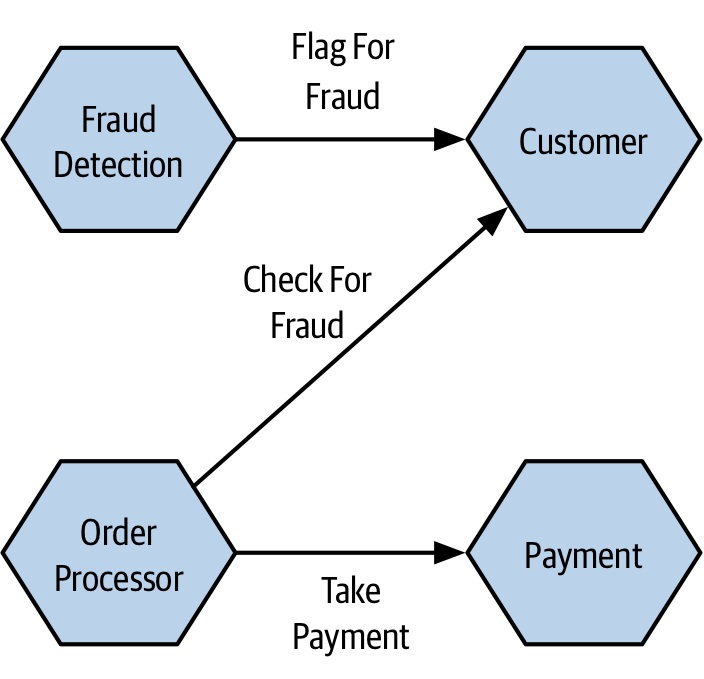
Figure 3-4. Moving fraud detection to a background process can reduce the concerns around the length of the call chain
We could also of course replace the use of blocking calls with some style of non-blocking interaction without changing the workflow here, something we’ll explore next.
Pattern: Asynchronous Non-blocking
With asynchronous communication, the act of sending a call out over the network doesn’t block the microservice issuing the call. It is able to carry on with any other processing without having to wait for a response. If a response is needed, it is able to handle that response when it returns. Non-blocking asynchronous communication comes in many forms, but we’ll be looking in more detail at the three most common styles I see in microservice architecture. They are:
- Communication Though Common Data
-
The upstream microservice changes some common data, which one or more microservices later make use of.
- Request-Response
-
A microservice sends a request to another microservice asking it to do something. When the requested operation completes, successfully or not, the upstream microservice receives the response.
- Event-Driven Interaction
-
A microservice broadcasts an event, which can be thought of as a factual statement as to something that has happened. Other microservices can listen for the events they are interested in and react accordingly.
Advantages
With non-blocking asynchronous communication the microservice making the initial call, and the microservice (or microservices) receiving the call, are decoupled temporarly. The microservices that receive the call do not need to be reachable at the same time the call is made. This means we avoid the concerns of temporal decoupling that we discussed in Chapter 2 (see “A Brief Note On Temporal Coupling”).
This style of communication is also beneficial if the functionality being triggered by a call will take a long time to process. Let’s come back to our example of MusicCorp, and specifically the process of sending out a package. In Figure 3-5, the Order Processor has taken payment, and decided that it is time to dispatch the package, so it sends a call to the Warehouse microservice. The process of finding the CDs, taking them off the shelf, packaging them up, and having them picked up, could take many hours, potentially days, depending on how the actual dispatch process works. It makes sense therefore for the Order Processor to issue a non-blocking asynchronous call to the Warehouse, and have the Warehouse call back to the Order Processor later on to inform it of progress. This is a form of asynchronous request-response communication.
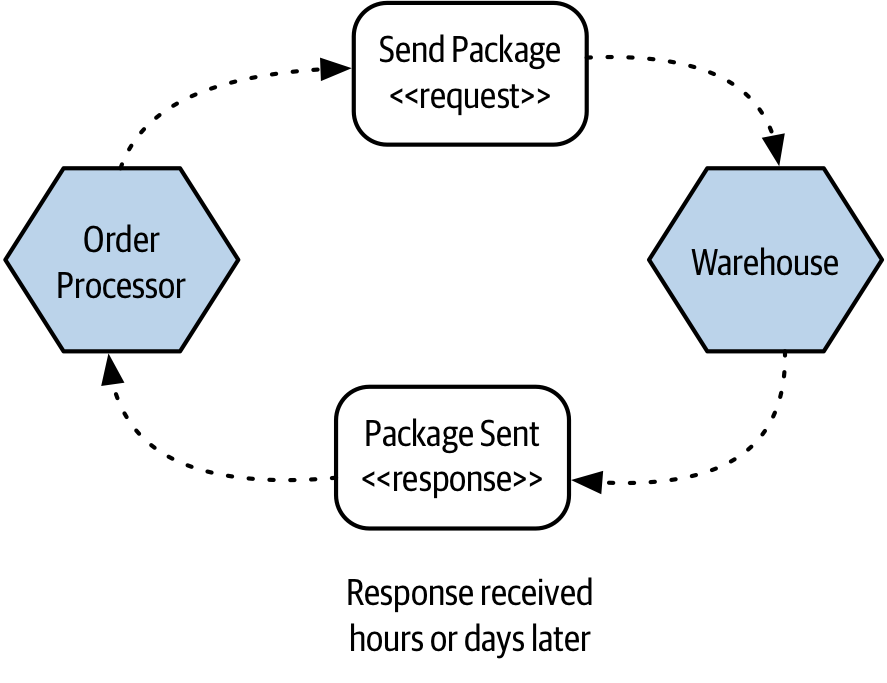
Figure 3-5. The Order Processor kicks off the process to package and ship an order, which is done in an asynchronous fashion
If we tried doing something similar with synchronous blocking calls, then we’d either have to restructure the interactions between Order Processor and Warehouse - it wouldn’t be feasible for Order Processor to open a connection, send a request, block any further operations in the calling the thread, and wait for what might be hours or days waiting for a response.
Disadvantages
The main downsides of non-blocking asynchronous communication, relative to blocking synchronous communication, is the level of complexity and range of choice. As we’ve already outlined, there are different styles of asynchronous communication to choose from - which is right for you? When we start digging into how these different styles of communication are implemented, there is a potentially bewildering list of technology we could look at.
If asynchronous communication doesn’t map to your mental models of computing, adopting an asynchronous style of communication will be challenging at first. And as we’ll explore further when we look at detail at the various styles of asynchronous communication, there are a lot of different, interesting ways in which you can get yourself into a lot of trouble.
Where To Use It
Ultimately, when considering if asynchronous communication is right for you, you also have to consider which type of asynchronous communication you want to pick, as each as it’s own tradeoffs. In general though, there are some specific use cases that would have me reaching for some form of asynchronous communication. Long running processes are an obvious candidate, as we explored in Figure 3-5 above. Also, situations where you have long call chains you can’t easily restructure could be a good candidate. We’ll dive deeper into this though when we look at three of the most common forms of asynchronous communication - request-response calls, event-driven communication, and communication through common data.
Pattern: Communication Through Common Data
A style of communication which spans a multitude of implementations is communication through common data. This pattern is used in a situation where one microservice puts data into a defined location, and another microservice (or potentially multiple) then make use of this data. It can be as simple as one microservice dropping a file in a location, and at some point later on another microservice picking that file up and doing something with it. This integration style is fundamentally asynchronous in nature.
An example of this is shown in Figure 3-6, where the New Product Importer creates a file that is then read by the downstream Inventory and Catalog microservices.
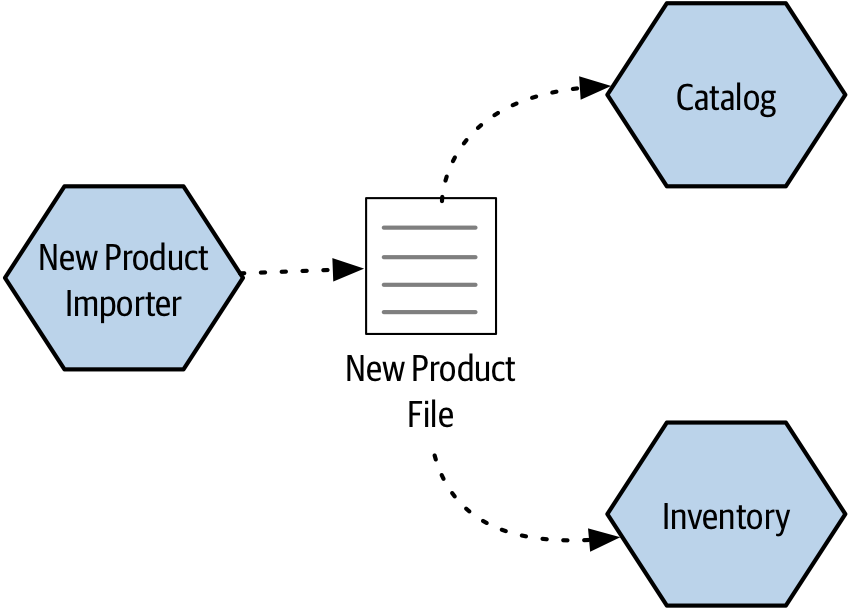
Figure 3-6. One microservice writes out a file which other microservices make use of
This pattern is in some ways the most common general inter-process communication pattern that you’ll see, and yet we sometimes fail to see it as a communication pattern at all - largely I think because the communication between processes is often so indirect as to be hard to spot.
Implementation
To implement this pattern, you need some sort of persistent store for the data. A file system in many cases can be enough. I’ve built many systems which just periodically scan a file system, note the presence of a new file, and react on it accordingly. You could also use some sort of robust distributed memory store as well of course. It’s worth noting that any downstream microservice which is going to act on this data will need it’s own mechanism to identify that new data is available - polling is a frequent solution to this problem.
Two common examples of this pattern are the data lake and the data warehouse. In both cases, these solutions are typically designed to help processing large volumes of data, but arguably they exist at opposite ends of the spectrum regarding coupling. With data lake, sources upload raw data in whatever format they see fit, and downstream consumers of this raw data are expected to know how to process that information. With a data warehouse, the warehouse itself is a structured data store. Microservices pushing data to the data warehouse need to know the structure of the data warehouse - if the structure changes in a backwards compatible way, then these producers will need to be updated.
With both the data warehouse or data lake, the assumption is that the flow of information is in a single direction. One microservice publishes data to the common data store, and downstream consumers read that data and carry out appropriate actions. This unidirectional flow can make it easier to reason about the flow of information. A more problematic implementation can be the use of a shared database where multiple microservices both read and write to the same data store, an example of which we discussed in Chapter 2 when we explored common coupling - Figure 2-8 shows both the Order Processor and Warehouse updating the same record.
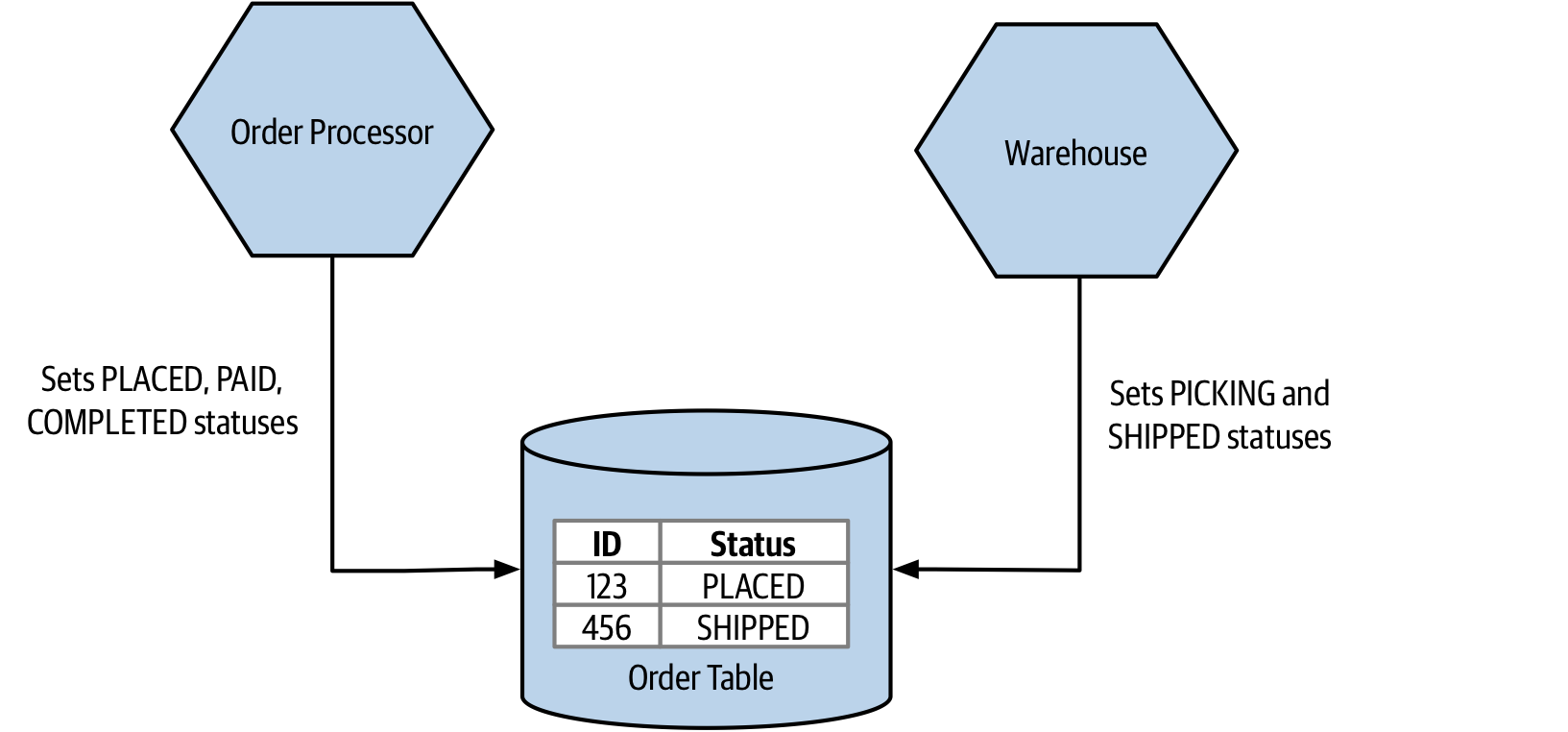
Figure 3-7. An example of common coupling where both Order Processor and Warehouse are updating the same order record
Advantages
This pattern can be implemented very simply, using commonly understood technology. If you can read or write to a file, or read and write to a database, you can use this pattern. The use of prevalent and well understood technology also enables interoperability between different types of systems, including older mainframe applications or customizable of the shelf software (COTS) products. Data volumes are also less of a concern here - if you’re sending lots of data in one big go, this pattern can work well.
Disadvantages
Downstream consuming microservices will typically be aware that there is new data to process via some sort of polling mechanism, or else perhaps through a periodically triggered timed job. That means that this mechanism is unlikely to be useful in low-latency situations. You can of course combine this pattern with some other sort of call, informing a downstream microservice that new data is available. For example I could write a file to a shared filesystem, then send a call to the interested microservice informing it that there is new data that it may want. This can close the gap between data being published and data being processed. In general though, if you’re using this pattern for very large volumes of data, it’s less likely that low latency is high on your list of requirements. If you are interested in sending larger volumes of data and have them processed more in “real time”, then using some sort of streaming technology like Kafka would be a better fit.
Another big disadvantage, and something that should be fairly obvious if you remember back to our exploration of common coupling in Figure 2-8, is that the common data store becomes a potential source of coupling. If that data store changes structure in some way, it can break communication between microservices.
The robustness of the communication will also come down to the robustness of the underlying data store. This isn’t a disadvantage strictly speaking, but something to be aware of. If you’re dropping a file on a file system, you might want to make sure that the filesystem itself isn’t going to fail in interesting ways.
Where To Use It
Where this pattern really shines is in enabling interoperability between processes which might have restrictions in what technology they can use. Having an existing system talk to your microservice’s GRPC interface or subscribe to its Kafka topic might well be more convenient from the point of view of the microservice, but not from the point of view of a consumer. Older systems may have limitations on what technology they can support, and may have high costs of change. Even old mainframe systems should be able to read data out of a file on the other hand. This does of course all depend on using data store technology which is widely supported - I could also implement this pattern using something like a redis cache. But can your old mainframe system talk to redis?
Another major sweet spot for this pattern is when sharing large volumes of data. If you need to send a multi gigabyte file onto a file system, or load in a few million rows into a database, then this pattern is the way to go.
Pattern: Request-Response Communication
With request-response, a microservice sends a request to a downstream service asking it to do something, and expects to receive a response with the result of the request. This interaction can be undertaken via a synchronous blocking call, or could be implemented in an asynchronous non-blocking fashion. A simple example of this interaction is shown in Figure 3-8, where the Chart microservice, which collates the best selling CDs for different genres, sends a request to the Inventory service asking for the current stock levels for some CDs.
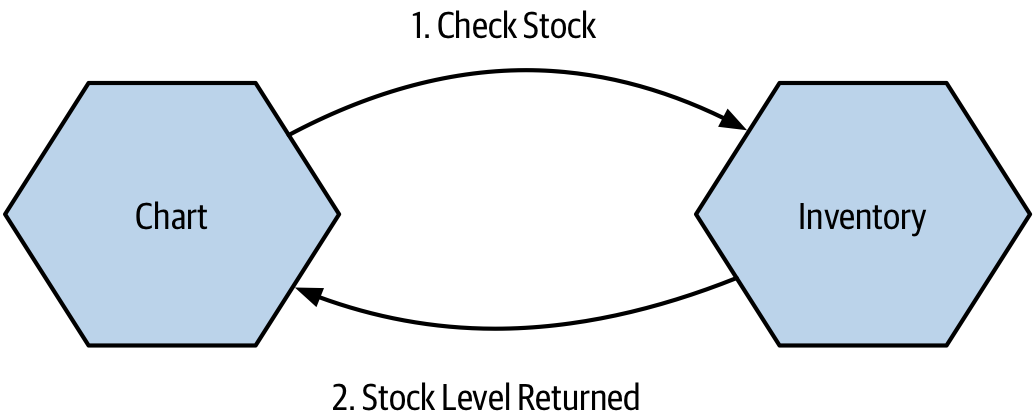
Figure 3-8. The Chart microservice sends a request to Inventory asking for stock levels
Retrieving data from other microservices like this is a common use case for a request-response call. Sometimes though, you just need to make sure something gets done. In Figure 3-9, the Warehouse microservice is sent a request from Order Processor, asking it to reserve stock. The Order Processor just needs to know that stock has been successfully reserved if it wants to carry on with taking payment. If the stock can’t be reserved - perhaps because an item is no longer available - then the payment can be cancelled. Using request-response calls in situations where calls need to be completed in a certain order like this is common place.

Figure 3-9. Order Processor needs to ensure stock can be reserved before payment can be taken
Implementation: Synchronous vs Asynchronous
Request-response calls like this can be implemented in either a blocking synchronous, or non-blocking asynchronous style. With a synchronous call, what you’d typically see is a network connection being opened with the downstream microservice, with the request being sent along this connection. The connection is kept open, waiting for the downstream microservice to respond. In this case, the microservice sending the response doesn’t really need to know anything about the microservice that sent the request - it’s just sending stuff back over an inbound connection.
With a asynchronous request response, things are less straight forward. Let’s revisit the process associated with reserving stock. In Figure 3-10 the request to reserve stock is sent as a message over some sort of message broker (we’ll explore message brokers later in this chapter). Rather than the message going directly to the Inventory microservice from Order Processor, it instead sits in a queue. The Inventory consumes messages from this queue when it is able. It reads the request, carries out the associated work of reserving the stock, and now it needs to send the response back to a queue that the Order Processor is reading from. The Inventory microservice needs to know where to route the response. In our example, it sends this response back over another queue which is in turn consumed by Order Processor.
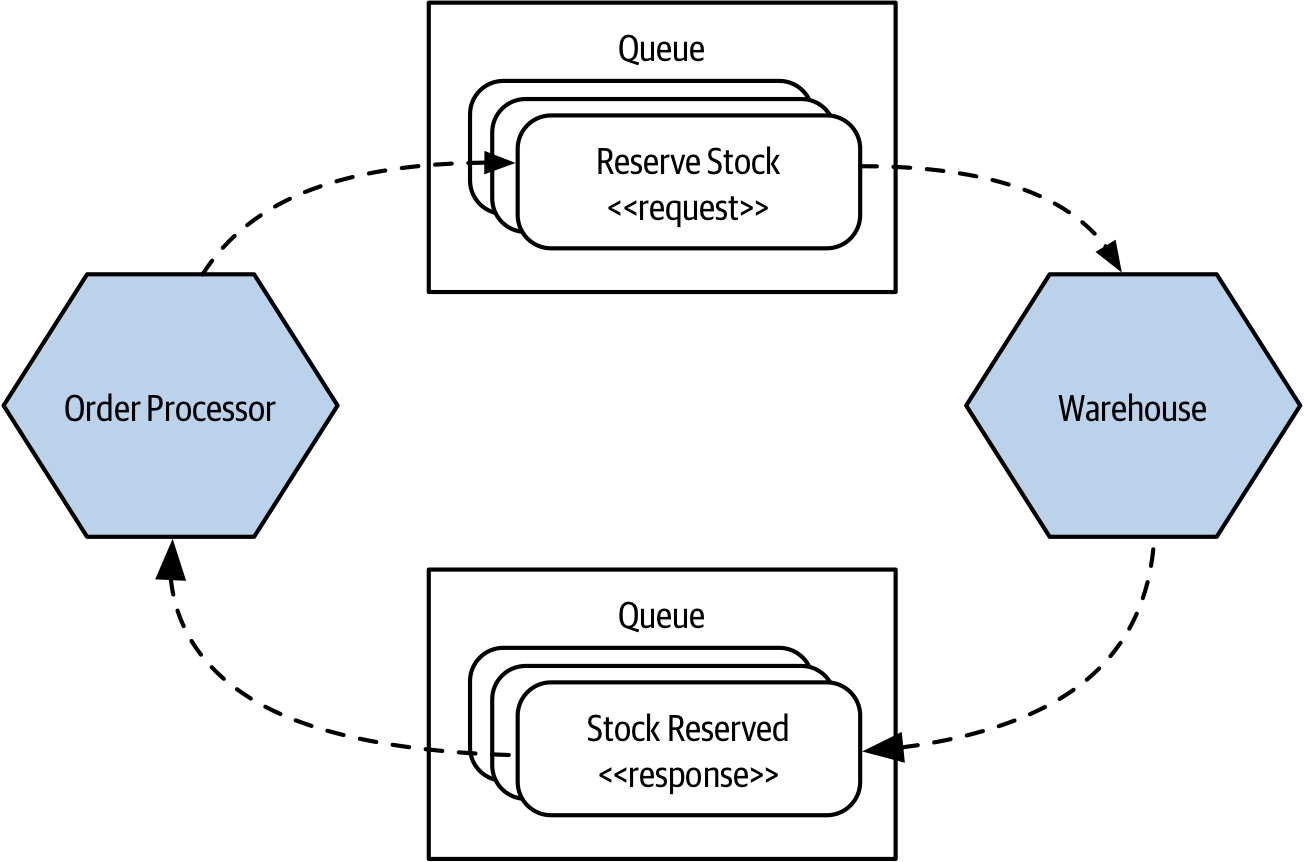
Figure 3-10. Using a queue to send stock reservation requests
So with a non-blocking asynchronous interaction, the microservice that receives the request either needs to implicitly know where to route the response, or else be told where the response should go. When using a queue, we have the added benefit that multiple requests could be buffered up in the queue waiting to be handled. This can help in situations where the requests can’t be handled quickly enough. The microservice can consume the next request when it is ready, rather than being overwhelmed by too many calls. A lot of course then depends on the queue absorbing these requests.
When a microservice receives a response in this way, it might need to relate the response to the original request. This can be challenging as a lot of time may have passed, and depending on the nature of the protocol being used, the response may not come back to the same instance of the microservice that sent the request. In our example of reserving stock as part of placing an order, we’d need to know how to associate the stock reserved response with a given order, so we can carry on processing that particular order. An easy way to handle this would be to store any state associated with the original request into a database, such that when the response comes in, the receiving instance can reload any associated state and act accordingly.
Where To Use It
Request-response calls make perfect sense for any situation where the result of a request is needed before further processing can take place. It also fits really well in situations where a microservice wants to know if a call didn’t work, so that it can carry out some sort of compensating action, like a retry. If that fits your situation, request-response is a sensible approach - the only remaining question then is to decide on a synchronous vs asynchronous implementation, with the same tradeoffs we discussed earlier.
Pattern: Event-Driven Communication
Event-driven communication looks quite odd compared to request-response calls. Rather than a microservice asking some other microservice to do something, instead a microservice emits events which may or may not be received by other microservices. It is an inherently asynchronous interaction, as the event listeners will be running on their own thread of execution.
An event is a statement about something that has occurred, nearly always something that has happened inside the world of the microservice that is emitting the event. The microservice emitting the event has no knowledge of the intent of other microservices to use the event, and indeed may not even be aware that any other microservice exists. It emits the event when required, and that is the end of it’s responsibilities.
In Figure 3-11, we see the Warehouse emitting events related to the process of packaging up of an order. These events are received by two microservices, Notifications and Inventory, and they react accordingly. The Notifications microservice sends an email to update our customer about changes in order status, where the Inventory microservice can update stock levels as items are packaged into customer orders.
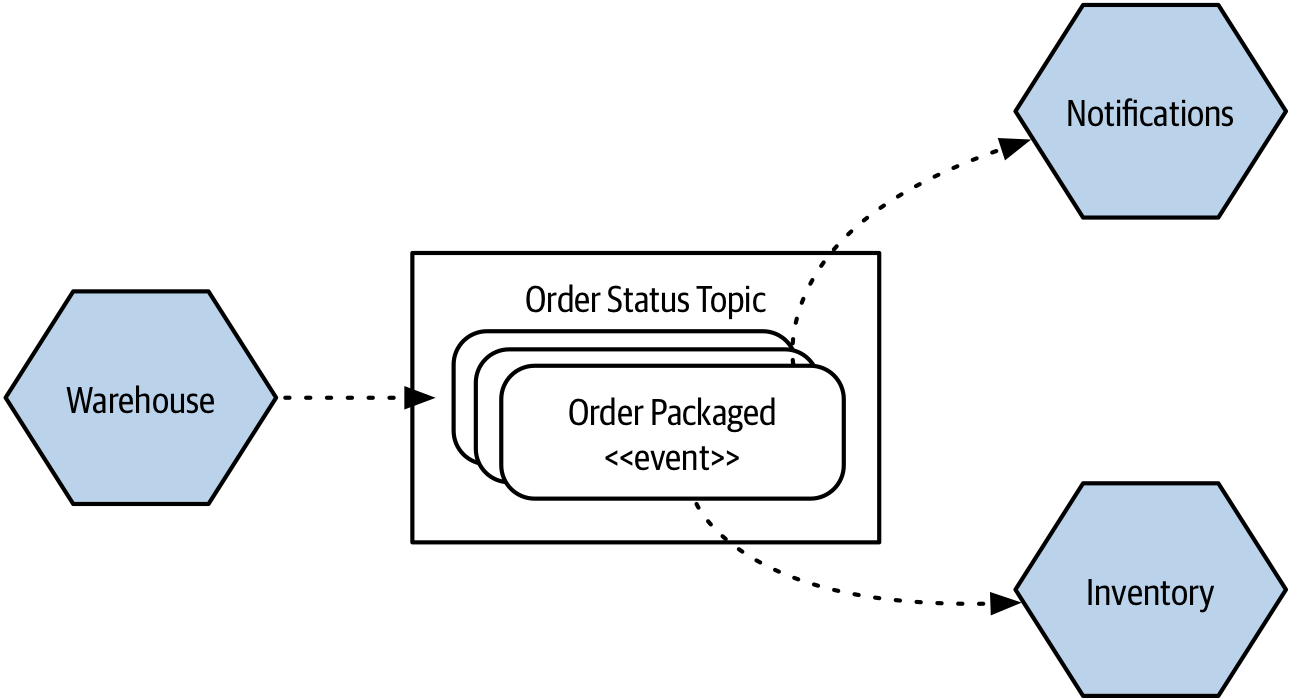
Figure 3-11. The Warehouse emits events which some downstream microservices care about
This is an inversion of responsibilities, when compared to a request-response model. With events, the Warehouse is just broadcasting events, assuming that interested parties will react accordingly. It is unaware of who the recipients of the events are, making event-driven interactions much more loosely coupled in general. When compared to a request-response call though, this is an inversion of responsibility that it can take a while to get your head around. With request-response, I might instead expect Warehouse to tell the Notifications microservice to send emails when appropriate. In such a model, the Warehouse would need to know what events require notifying a customer about. With an event-driven interaction, we are instead pushing that responsibility into the Notifications microservice.
This distribution of responsibility we see with our event-driven interactions can mirror the same distribution of responsibility we see with organizations trying to create more autonomous teams. Rather than holding all the responsibility centrally, instead we want to push it into the teams themselves to allow them to operate in a more autonomous fashion - a concept we will revisit in [Link to Come]. Here, we are pushing responsibility from Warehouse into Notifications and Payment - this can help us reduce the complexity of microservices like Warehouse, and lead to a more even distribution of “smarts” in our system. We’ll explore that idea in more detail when we compare choreography and orchestration later.
Implementation
There are two main parts we need to consider here: a way for our microservices to emit events, and a way for our consumers to find out those events have happened.
Traditionally, message brokers like RabbitMQ try to handle both problems. Producers use an API to publish an event to the broker. The broker handles subscriptions, allowing consumers to be informed when an event arrives. These brokers can even handle the state of consumers, for example by helping keep track of what messages they have seen before. These systems are normally designed to be scalable and resilient, but that doesn’t come for free. It can add complexity to the development process, because it is another system you may need to run to develop and test your services. Additional machines and expertise may also be required to keep this infrastructure up and running. But once it does, it can be an incredibly effective way to implement loosely coupled, event-driven architectures. In general, I’m a fan.
Do be wary, though, about the world of middleware, of which the message broker is just a small part. Queues in and of themselves are perfectly sensible, useful things. However, vendors tend to want to package lots of software with them, which can lead to more and more smarts being pushed into the middleware, as evidenced by things like the Enterprise Service Bus. Make sure you know what you’re getting: keep your middleware dumb, and keep the smarts in the endpoints.
Another approach is to try to use HTTP as a way of propagating events. ATOM is a REST-compliant specification that defines semantics (among other things) for publishing feeds of resources. Many client libraries exist that allow us to create and consume these feeds. So our customer service could just publish an event to such a feed when our customer service changes. Our consumers just poll the feed, looking for changes. On one hand, the fact that we can reuse the existing ATOM specification and any associated libraries is useful, and we know that HTTP handles scale very well. However, HTTP is not good at low latency (where some message brokers excel), and we still need to deal with the fact that the consumers need to keep track of what messages they have seen and manage their own polling schedule.
I have seen people spend ages implementing more and more of the behaviors that you get out of the box with an appropriate message broker to make ATOM work for some use cases. For example, the Competing Consumer pattern describes a method whereby you bring up multiple worker instances to compete for messages, which works well for scaling up the number of workers to handle a list of independent jobs (we’ll come back to that later in [Link to Come]). However, we want to avoid the case where two or more workers see the same message, as we’ll end up doing the same task more than we need to. With a message broker, a standard queue will handle this. With ATOM, we now need to manage our own shared state among all the workers to try to reduce the chances of reproducing effort.
If you already have a good, resilient message broker available to you, consider using it to handle publishing and subscribing to events. But if you don’t already have one, give ATOM a look, but be aware of the sunk-cost fallacy. If you find yourself wanting more and more of the support that a message broker gives you, at a certain point you might want to change your approach.
In terms of what we actually send over these asynchronous protocols, the same considerations apply as with synchronous communication. If you are currently happy with encoding requests and responses using JSON, stick with it.
What’s In An Event?
In Figure 3-12, we see an event being broadcast from the Customer microservice, informing interested parties that a new customer has registered with the system. Two of the downstream microservices, Loyalty and Notifications care about this event. The Loyalty microservice reacts to receiving the event by setting up an account for the new customer so that they can start earning points, whereas the Notifications microservice sends an email to the newly registered customer welcoming them to the wondrous delights of MusicCorp.

Figure 3-12. Notifications and Loyalty microservices receive an event when a new customer is registered.
With a request, we are asking a microservice to do something, and providing the required information for the requested operation to be carried out. With an event we are broadcasting a fact that other parties might be interested in, but as the microservice emitting an event can’t and shouldn’t know who receives the event, how do we know what information other parties might need from the event? So what, exactly, should be inside the event?
Just An ID
One option, is for the event to just contain an identifier for the newly registered customer, as shown in Figure 3-13. The Loyalty microservice only needs this identifier to create the matching loyalty account, so it has all the information it needs. However, while the Notifications microservice knows that it needs to send a welcome email when this type of event is received, it will need additional information to do its job - at least an email address, and probably the name of the customer as well to give the email that personal touch. As this information isn’t in the event that the Notifications microservice receives then it has no choice but to fetch this information from the Customer microservice, something we see in Figure 3-13.
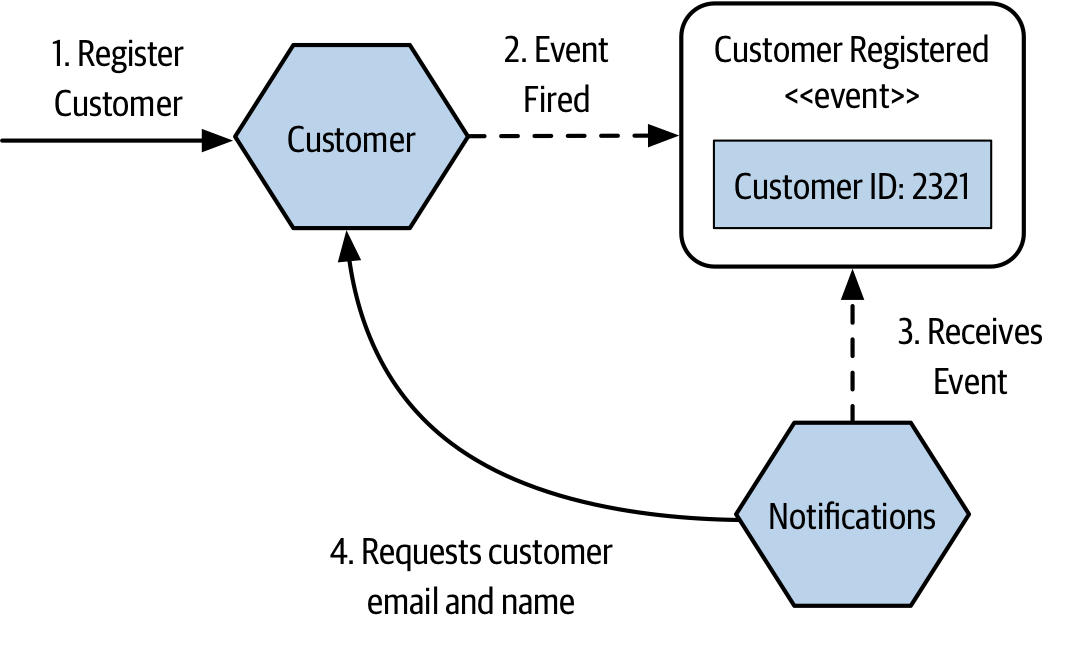
Figure 3-13. The Notification microservice needs to request further details from the Customer microservice as they aren’t in the event
There are some downsides with this approach. Firstly, the Notification microservice now has to know about the Customer microservice, adding additional domain coupling. While domain coupling, as we discussed in Chapter 2, is on the looser end of the coupling spectrum, we’d still like to avoid it where possible. If the event that Notification received contained all the information it needed, then this call back wouldn’t be required. This call back from the receiving microservice can also lead to the other major downside - namely that in a situation with a large number of receiving microservices, the microservice emitting the event might get a barrage of requests as a result. Imagine if five different microservices all received the same customer creation event, and all needed to request additional information - they’d all need to immediately send a request to the Customer microservice to get what they needed. As the number of microservices interested in a particular event increases, the impact of these calls could become significant.
Fully Detailed Events
The alternative, which I prefer, is to put everything into an event that you would be happy otherwise sharing via an API. If you’d let the Notifications microservice ask for the email address and name of a given customer, why not just put that in the event in the first place? In Figure 3-14, we see this approach - Notification is now more self-sufficient, and able to do its job without needing to communicate with the Customer microservice. In fact, it might never need to know the Customer microservice even exists.

Figure 3-14. An event with more information in it can allow receiving microservices to act without requiring further calls to the source of the events.
In addition to the fact that events with more information can allow for looser coupling, events with more information can double up as an historical record as to what happened to a given entity. This could help you as part of implementing an auditing system, or perhaps even provide the ability to reconstitute an entity at given points of time - meaning that these events could be used as part of an event sourcing, a concept we’ll explore briefly in a moment.
Whilst this approach is definitely my preference, it’s not without some downsides. Firstly, if the data associated with an event is large, we might have concerns about the size of the event. Now, modern message brokers (assuming you’re using one to implement your event broadcast mechanism) have fairly generous limits for message size. The default maximum size for a message in Kafka is 1MB, and the latest release of RabbitMQ has a theoretical upper limit of 512MB for a single message (down from the previous limit of 2GB!), even though one could expect there to be some interesting performance issues with large messages like this. But even the 1MB afforded to us as the maximum size of a message on Kafka gives us a lot of scope to send quite a bit of data. Ultimately, if you’re venturing into a space where you are starting to worry about the size of your events, then a hybrid approach where some information is in the event but other (larger) data can be looked up if required.
In Figure 3-14, Loyalty doesn’t need to know the email address or name of the customer, and yet because it is being sent this information via the event it nonetheless receives it. This could lead to concerns if we are trying to limit the scope of which microservices can see what kind of data - for example I might want to limit what microservices can see personally identifiable information (or PII), payment card details, or similar sensitive data. A way to solve this could be to implement something like Split Horizon Communication, which we’ll explore later in [Link to Come].
Another consideration is that once we put data into an event, it becomes part of our contract with the outside world. We have to be aware that if we remove a field from an event that we may break external parties. Information hiding is still an important concept in event-driven collaboration - the more data we put into an event, the more assumptions external parties will have about an event. My general rule is that I am OK putting information into an event if I’d be happy sharing the same data over a request-response API.
Did It Work?
TODO: Move to workflow discussion?
Some of this asynchronous stuff seems fun, right? Event-driven architectures seem to lead to significantly more decoupled, scalable systems. And they can. But these programming styles do lead to an increase in complexity. This isn’t just the complexity required to manage publishing and subscribing to messages as we just discussed, but also in the other problems we might face. For example, when considering long-running async request-response, we have to think about what to do when the response comes back. Does it come back to the same node that initiated the request? If so, what if that node is down? If not, do I need to store information somewhere so I can react accordingly? Short-lived async can be easier to manage if you’ve got the right APIs, but even so, it is a different way of thinking for programmers who are accustomed to intra-process synchronous message calls.
Time for a cautionary tale. Back in 2006, I was working on building a pricing system for a bank. We would look at market events, and work out which items in a portfolio needed to be repriced. Once we determined the list of things to work through, we put these all onto a message queue. We were making use of a grid to create a pool of pricing workers, allowing us to scale up and down the pricing farm on request. These workers used the Competing Consumer pattern, each one gobbling messages as fast as possible until there was nothing left to process.
The system was up and running, and we were feeling rather smug. One day, though, just after we pushed a release out, we hit a nasty problem. Our workers kept dying. And dying. And dying.
Eventually, we tracked down the problem. A bug had crept in whereby a certain type of pricing request would cause a worker to crash. We were using a transacted queue: as the worker died, its lock on the request timed out, and the pricing request was put back on the queue—only for another worker to pick it up and die. This was a classic example of what Martin Fowler calls a catastrophic failover.
Aside from the bug itself, we’d failed to specify a maximum retry limit for the job on the queue. We fixed the bug itself, and also configured a maximum retry. But we also realized we needed a way to view, and potentially replay, these bad messages. We ended up having to implement a message hospital (or dead letter queue), where messages got sent if they failed. We also created a UI to view those messages and retry them if needed. These sorts of problems aren’t immediately obvious if you are only familiar with synchronous point-to-point communication.
The associated complexity with event-driven architectures and asynchronous programming in general leads me to believe that you should be cautious in how eagerly you start adopting these ideas. Ensure you have good monitoring in place, and strongly consider the use of correlation IDs, which allow you to trace requests across process boundaries, as we’ll cover in depth in [Link to Come].
I’d also strongly recommend checking out Enterprise Integration Patterns (Addison-Wesley), which contains a lot more detail on the different messaging patterns that you may want to consider in this space.
Summary
In this chapter, we broke down some of the key styles of microservice communication, and discussed the various tradeoffs. There isn’t always a single right option, but hopefully I’ve detailed enough information regarding synchronous and asynchronous calls, event-driven and request-response styles of communication, to help you make the right call for your given context.
Where this chapter focused primarily on how one microservice talks to another, in our next chapter we look beyond that to how we can get multiple microservices collaborating to implement workflows.
1 True story
2 Please note, this is very simplified - I’ve completely omitted error handling code for example. If you want to know more about async/await, specifically in JavaScript, the The Modern JavaScript Tutorial is a great place to start: https://javascript.info/
